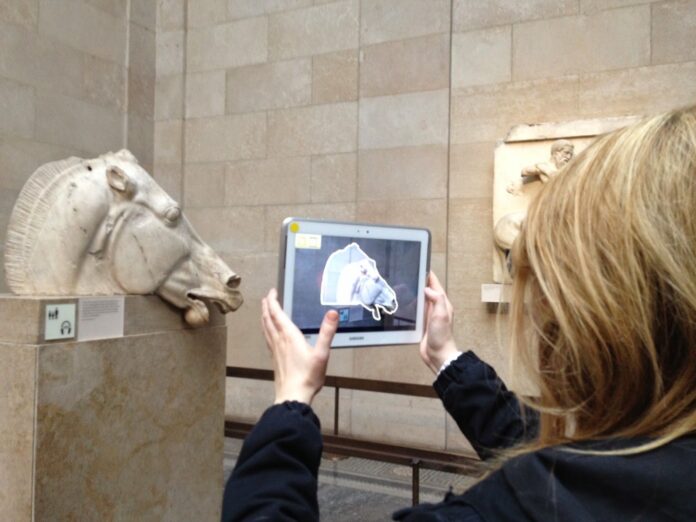In the 21st century, the intersection of art and technology has given rise to a transformative era in creative expression. Innovations in art technology are reshaping the way we perceive, experience, and engage with artistic works. From tech-enhanced exhibitions to virtual reality (VR) and augmented reality (AR) experiences, artists and technologists are collaborating to push the boundaries of what is possible in the realm of artistic expression.
Tech-Enhanced Exhibitions: A New Frontier in Curation
Traditional art exhibitions are evolving with the integration of cutting-edge technology. Museums and galleries are adopting tech-enhanced displays to create immersive and interactive exhibitions that transcend the limitations of physical space. Projection mapping, interactive screens, and sensor-driven installations are becoming integral elements of contemporary exhibitions.
One example is the Digital Revolution exhibition at the Barbican Centre in London. This groundbreaking exhibition explored the impact of digital technology on art, design, film, music, and video games. It featured interactive installations, 3D printing demonstrations, and immersive visual displays that provided visitors with a hands-on experience of the digital revolution’s influence on the creative landscape.
Virtual Reality Art: Immersive Journeys into Creativity
Virtual reality (VR) has emerged as a powerful tool in the realm of art, offering viewers immersive experiences that transcend the boundaries of traditional mediums. Artists are using VR to create virtual environments, enabling audiences to step into the artist’s imagination and engage with art on an entirely new level.
Olafur Eliasson, a renowned contemporary artist, embraced virtual reality with his project “Rainbow.” In this VR experience, participants find themselves in a vibrant, three-dimensional world where they can interact with and manipulate virtual rainbows. This merging of art and technology allows for a deeply personal and interactive encounter with the artwork, blurring the lines between the physical and the virtual.
Augmented Reality in Art: Bridging the Real and the Imagined
Augmented reality (AR) has found its place in the art world, seamlessly blending the real world with digital overlays. AR allows artists to superimpose digital content onto physical spaces, creating a dynamic and interactive layer that enhances the viewer’s perception of the artwork.
“Unreal City” by DPT Collective is a striking example of augmented reality in art. Using a smartphone or tablet, viewers can explore a virtual cityscape overlaid onto their physical surroundings. The digital city features dynamic, site-specific artworks, transforming the urban environment into a canvas for artistic expression. AR not only adds a new dimension to public art but also democratizes access, allowing anyone with a smartphone to engage with these virtual installations.
Technology-Driven Art Experiences: The Marriage of Creativity and Innovation
Artists are increasingly turning to technology as a medium in itself, blurring the lines between the traditional and the avant-garde. Technology-driven art experiences encompass a wide range of forms, from generative algorithms creating visual art to artificial intelligence (AI) generating poetry and music.
Random International’s “Rain Room” is a technology-driven art installation that has captivated audiences worldwide. Using motion sensors, the installation creates a carefully choreographed downpour of rain that stops wherever it detects human presence. This fusion of technology and environmental art invites participants to navigate a controlled rainstorm, blurring the boundaries between the natural and the artificial.
The Impact on Accessibility and Inclusivity
One of the remarkable outcomes of innovations in art technology is the increased accessibility and inclusivity of artistic experiences. VR and AR, in particular, have the potential to bring art to a broader audience, transcending geographical constraints and making art accessible to individuals who may face physical barriers to traditional gallery spaces.
The Google Arts & Culture platform is an exemplary initiative that leverages technology to make art accessible to people around the world. Through virtual tours, high-resolution images, and AR experiences, users can explore the collections of museums and galleries from the comfort of their homes. This democratization of art breaks down traditional barriers, allowing individuals from diverse backgrounds to engage with art on their terms.
Challenges and Ethical Considerations
While the integration of technology into the art world brings about exciting possibilities, it also raises ethical considerations and challenges. Privacy concerns, the environmental impact of technology, and the potential for the commercialization of art experiences are topics that require careful consideration.
The carbon footprint of VR and AR technologies, for example, is a subject of concern. The energy-intensive nature of creating and operating these technologies poses environmental challenges, urging the industry to explore more sustainable alternatives. Artists and technologists are actively engaging in conversations about ethical practices to ensure that the benefits of technological innovation are not outweighed by negative consequences.
A Technological Renaissance in Art
As we navigate the landscape of art and technology, it becomes evident that we are witnessing a renaissance in creativity and innovation. Tech-enhanced exhibitions, virtual reality art, augmented reality experiences, and technology-driven art installations are redefining the boundaries of artistic expression and transforming how we engage with art.
In this era of constant technological evolution, artists and technologists are forging new paths, creating dynamic and immersive experiences that challenge our perceptions and provoke thought. The marriage of art and technology is not just a trend; it is a revolutionary force that has the potential to democratize art, redefine the gallery experience, and shape the future of creative expression. As we continue to explore the possibilities that emerge at the intersection of art and technology, we embark on a journey of limitless innovation and artistic evolution.

























